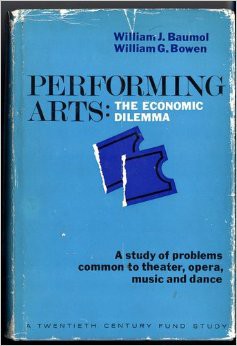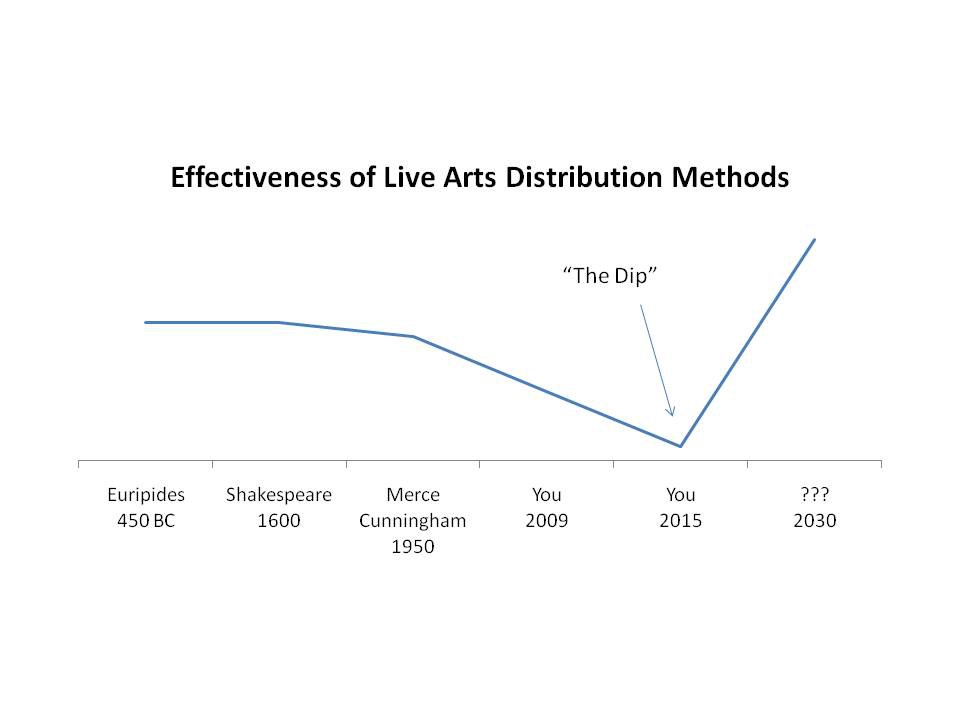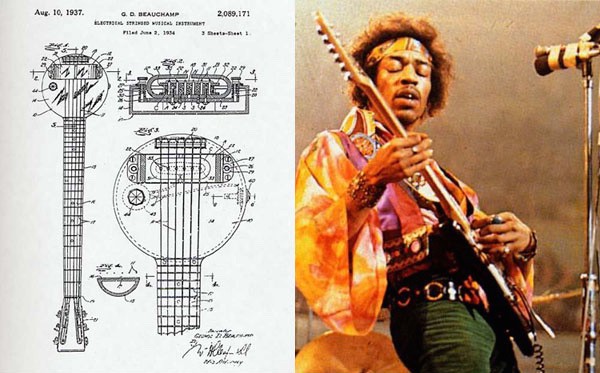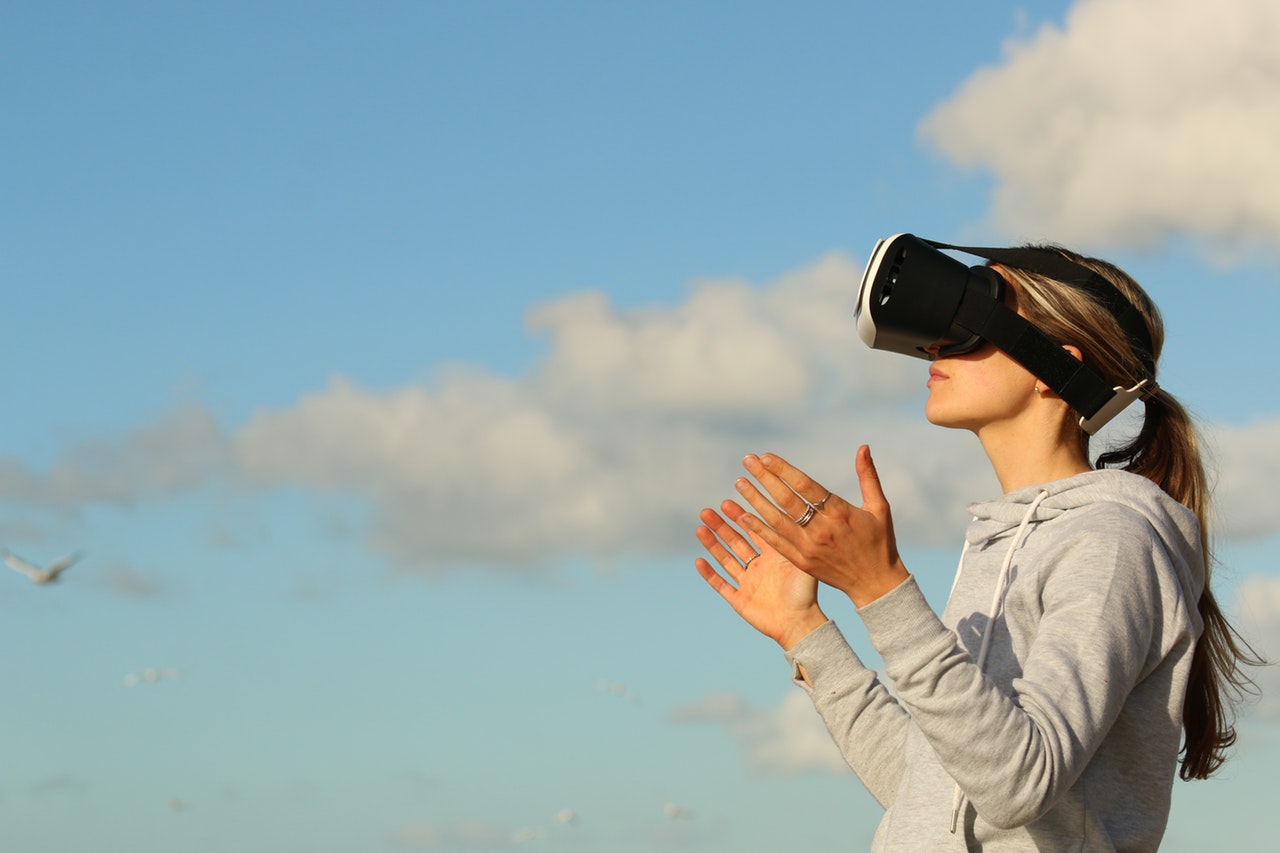Can Oculus Cure Baumol?
How Virtual Reality Could Solve the Arts’ Distribution Problem
These are bleak times for America’s arts institutions. Lockouts and labor strife have become standard operating procedure, and that’s for the lucky ones. Those with shakier balance sheets are being felled by bankruptcy, many never to return.
It’s tempting to blame the Great Recession, but that’s just one more straw on the tired old camel’s back. In reality, what we’re seeing is Baumol’s Cost Disease coming home to roost — a far scarier prospect. Recessions end, but Baumol is fatal.

William J. Baumol is an American economist, perhaps best known for his theory of cost disease. The phenomenon was first documented in a landmark study of the performing arts sector, conducted by Baumol along with William G. Bowen in 1966. The economists famously observed that the number of musicians required to perform a Beethoven string quartet in 1966 was the same as the number required in the 19th century. That is to say, unlike most industries, the performing arts experience little to no gains in labor productivity over time. Nonetheless, labor costs (i.e. artist and administrator salaries) tend to keep pace with rising wages across the economy as a whole.
This is a simple (and frankly kind of obvious) idea. But the implications are profound. If your business model is based on steadily rising costs alongside stagnant productivity… Well, it doesn’t take a mathematician to realize this is an unsustainable equation.
For a century or more we’ve been buying time — by increasing ticket prices, shaking down donors, and squeezing the artists who supply our product. But the whole time we’ve been hurdling toward a cliff, and now the first wave of lemmings are going over the edge.
So Baumol’s Cost Disease is an existential threat. But maybe there’s a cure, right? A few smart colleagues have recently addressed this question.
In a November piece on The Clyde Fitch Report, Duncan Webb declared:
…we have to let organizations come and go in a lot more realistic way…[and] forget this idea that nonprofit organizations should be stable, permanent entities with all of the attendant infrastructure, overhead and benefits.
Essentially, Webb concludes that we can’t cure Baumol, but perhaps we can treat the symptoms. His suggestions include embracing “creative destruction” along with the inevitable fluidity in the resulting landscape.
As an unapologetic Joseph Schumpeter fanboy I find this argument persuasive and am at peace with the idea of impermanent arts organizations. After all, the art is what’s important. Arts organizations are a means to an end, and when they can no longer serve their purposes, we shouldn’t be afraid to move on.
Still, the picture Webb paints is pretty bleak. He’s describing a sector that is collapsing on all fronts, and advising his readers on how to survive in the post-apocalyptic economic landscape to come. Ouch.
In a critical, quasi-optimistic response to Webb, Michael Rushton argues that Baumol’s cost disease is real but something of a red herring, and that we need to focus instead on increasing demand:
…the live performing arts cannot rely on [Baumol] as the primary cause of their economic difficulties; there is too much else going on at the same time, and not all of it is external to the arts organizations, beyond their control. Sectors prone to cost disease thrive where they maintain demand for their services: that’s the key.
Okay, fair enough. If your supply-side productivity is crippled by cost disease, then it’s a no brainer to look at increasing demand. Problem solved, right?
Sadly, no. Puzzlingly, Rushton mentions none of the basic constraints that limit the ability of an arts organization to increase demand beyond a relatively low fixed ceiling. These include the number of seats in a theatre and the square footage of a museum — both are finite. Likewise, you can only increase prices so much, especially when there’s no shortage of competition for leisure time. So even if your theoretical ability to increase demand were limitless, your practical ability to sell more tickets, attract more patrons, or bring in more revenue could never keep up.
What, then, would it take to crash through these seemingly immutable demand ceilings? The answer lies in distribution.
In fairness to Rushton, he does briefly reference the idea of “distribution opportunities online, and through retail sales of cd’s.” But I’m more interested in the possibility of radical innovation on this front.
What would it take to crash through these demand ceilings?
The answer lies in distribution.
The problem with a YouTube concert video, a DVD of a dance performance, or a high-resolution photo of a painting is that they’re so diluted from their “authentic” analogs as to be effectively different aesthetic experiences altogether. They’re not without value, but they’re just not the same thing. They can’t function as substitutes, merely as archives.
I first wrote about this challenge nearly five years ago, when I proposed a “Live Arts Distribution Manhattan Project.” Quoth I:
This is going to take some serious R&D by some very smart people. To succeed, they’ll need to appreciate the essence of the aesthetic experience and also have a deep understanding of cutting-edge technologies. They’ll need to investigate virtual reality, motion capture video, and 3D / holographic projection, along with more mundane things like high-bandwidth streaming. They’ll need to forge partnerships with wildly different industries grappling with similar underlying challenges: aerospace engineering, battlefield communications, satellite broadcasting.
 My chart of distribution technologies, circa 2009.
My chart of distribution technologies, circa 2009.Sheepishly, I must admit that I’ve done almost nothing in the past 5 years to move this agenda forward. Fortunately, Palmer Luckey and John Carmack have!
Luckey and Carmack are the creators of the Oculus Rift, which is the best known of several early-stage virtual reality headsets (others include Sony’s Project Morpheus and Vrvana’s Totem) that are getting a lot of attention in the gaming and entertainment industries.
When Oculus VR announced the availability of a new Rift developer kit, I was one of the first to sign up. I didn’t know exactly what I’d do with it, but I was excited by the possibility that affordable, high-quality, consumer-oriented virtual reality hardware could be the critical innovation I was looking for back in 2009.
Virtual reality isn’t quite good enough to completely fool our brains, but it’s pretty damn good and getting closer every day. Herein lies the tantalizing possibility of a “broadcast” live art experience that isn’t a blurry bastardization of the original, but a near perfect facsimile of it, with every bit as much sensory stimulation and emotional impact.
Now things get interesting. With the ability to provide an undegraded aesthetic experience to a limitless audience, either in real time or as a recording, arts organizations stand a chance to reshape the structural foundations of our industry in a way that breaks the grip of Baumol forever.
The ability to provide an undegraded aesthetic experience to a limitless audience could break the grip of Baumol forever.
How might this unfold in practice? Suffice it to say there will be no shortage of creative destruction en route to the industry’s future normal.
First, it would justify much larger capital investments in artistic production. We could even see a kind of arms race, since suddenly an opera company is competing against every other opera company on Earth, not just the one or two others in its own geographic region. The good news is that those costs could be amortized across millions of ticket sales rather than thousands.
These are the economics of Hollywood and video game producers. Of course, there’s a reason there are so many more orchestras than there are major motion picture studios. Industry dynamics like these would result in rapid consolidation of the mega institutions (which would likely be artificially slowed by misguided, futile philanthropic efforts). The survivors would be the organizations with the most capital, the best distribution, and the strongest brands.
Fortunately, this consolidation at the institutional level need not mean a reduction in the number or diversity of artistic voices. Not only would virtual reality enabled “unbounded distribution” lead to a new age of blockbuster performances and exhibits, it could also be a boon for the long tail of marginal voices whose niche audiences are only big enough to be sustainable when they’re pulling from the global population.
In other words: if I’m an avant garde choreographer and capoeira master living in Oklahoma City, there might be only a handful of locals willing to buy a ticket to my performance. But if geography is no longer a constraint, then the Rio de Janeiro-based International Capoeira Center can present my show to its global audience without even having to buy me a plane ticket. It’s even more likely to do so if there’s no limit to the number of performances it can broadcast at the same time (since it no longer matters how many discrete venues it has).
If this sounds naive, consider that this is exactly what digital book publishing has done. Amazon, a capital-rich institution with a vast audience and unparalleled distribution, created a mechanism for authors to self-publish their work. The result? According to Publisher’s Weekly, self-published authors are taking “significant market share in all genres,” representing 31% of Amazon’s e-book sales and earning 40% of all e-book dollars going to authors. By contrast, the “big five” traditional publishers now account for just 16% of the e-books on Amazon’s bestseller lists. This represents an extraordinary realignment of a major, mature industry, and we’re still only a couple of years into the experiment.
I’m optimistic that virtual reality distribution could unlock a similar proliferation and diversification of artistic voices with legitimate platforms on which to be seen and heard. It could also nudge us toward a world in which artistic talent matters more than who you know or where you were born — an exciting prospect!
So is it time to declare Baumol cured? Have we managed to get our Manhattan Project sooner and far cheaper than expected?
Unfortunately it’s not so simple. There are at least two serious causes for skepticism that I haven’t yet addressed. Call these the Oculus Caveats.
Caveat #1: From new media evolve new art forms
Historically, whenever a new medium has developed, it has taken us a generation or two to figure out what to do with it. At first, the impulse is to graft whatever we were doing before onto the new format. That’s why early television shows like The Honeymooners were essentially filmed stage plays. Similarly, when Hollywood figured out how to include sound with their moving pictures, they immediately started making film versions of Broadway musicals.
After an extended transitional period (possibly lasting until the first generation of artists who grew up with the medium reach the prime of their careers), we start changing the way we create content to adapt to the specific strengths and weaknesses of the medium itself. The electric guitar may have been invented in 1931, but it took 35 years for Jimi Hendrix to discover what it was good for.
 George Beauchamp invented the electric guitar in 1931. Thirty-five years later, Jimi Hendrix made it awesome.
George Beauchamp invented the electric guitar in 1931. Thirty-five years later, Jimi Hendrix made it awesome.No one knows what we’ll be doing with virtual reality in the year 2050. Between now and then (whether the “high art” world embraces the technology or not) I’m sure we’ll enjoy plenty of “live” rock concerts from our living rooms. But virtual reality provides a huge leap in opportunities to experiment with form and presentation. For artists and technologists alike, this will be an irresistible playground. At some point, we’ll find ourselves with whole new art forms, inconceivable to us today, made possible by virtual reality technology.
And that’s something to celebrate! But it does call into question the idea that anyone will bother hooking up her Oculus Rift 30th Anniversary Edition to experience a Mahler symphony.
Caveat #2: Can virtual reality be social?
Another element that’s been conveniently absent from my analysis so far is the social factor. Anthropologists and cultural historians can debate when and why humans started to express themselves with cave painting or fire dances. My intuition is that the art-making impulse is fundamentally social — a desire to communicate something about our shared human experience. Likewise, the psychological and emotional gratification we derive from being on the other end of that communication is amplified by experiencing it together with other humans, and by sharing a real-time dialogue with the artist. I don’t claim to understand the neuropsychology of it (Jean Ann Douglass tells me it has to do with mirror neurons), but I bet the ancient Greeks would have shared my view.
Regardless, there’s a reason most of us would rather watch a live dance performance than even the most high quality video recording of it. Some of that — the part that virtual reality can fix — has to do with technological limitations. But part of the appeal surely comes from sitting amid other people watching the same performance.
Will virtual reality experiences forever be solitary ones (as they are today)? Or might we one day develop mechanisms for multiple people to occupy the same virtual environment? The latter seems possible, especially given the recent acquisition of Oculus VR by some folks who know a little bit about making media social, but it’s far from guaranteed.
So the answer is “maybe”? (Way to take a stand, Huttler…)
Sorry I can’t commit to a more definitive answer here. What I’m confident of, however, is that:
- Baumol’s cost disease is real, and on its present trajectory potentially fatal.
- Our best hope for salvation lies in cracking open distribution.
- To that end, virtual reality is a promising avenue for exploration, but hardly a panacea.
Despite my imperfect crystal ball, here are two ways this is actionable, today:
First, we have to stop being sentimental about arts organizations. Art is essential to our humanity. Arts organizations are socioeconomic constructs created to facilitate distribution, just like publishing companies or record labels. They rose to prominence as a response to, and in the specific context of, 20th century American capitalism. They've done some great work and many still serve a useful purpose, but they’re not sacred.
Second, it’s critical that the arts community get serious about embracing the radical technological innovations that are happening all around us. I’ll offer my own mea culpa on this one. Fractured Atlas is a proud and aggressive technology innovator, but our work to date has been about making the field’s existing infrastructure function more efficiently and democratically. That may be vital, but it’s not radical. We can do more.
About Adam Huttler
Adam Huttler is the founder and Managing General Partner of Exponential Creativity Ventures. As a six-time founder, his career’s through-line has been about helping mission-driven companies use technology to drive innovative revenue strategies. Adam is best known as the founder of Fractured Atlas, a social enterprise SaaS platform that helps artists and creative businesses thrive.


